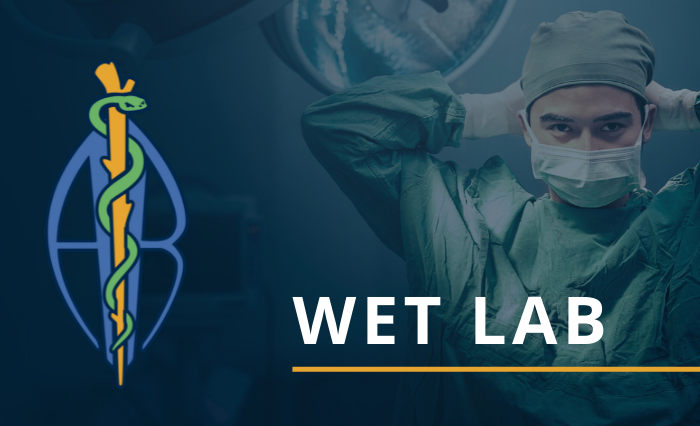Intrathecal Dosing – Boldly Going Where Few Molecules Have Gone Before

Date: Thursday, October 12, 2023
Time: 10:30 am CTDuration: 30 MinutesRoom: Cumberland Ballroom, Salon ABCD
Scott Adrian, Charles River Laboratories, and Gayle Nugent, Charles River Laboratories
Ever since 1898, when August Bier injected six patients and himself with cocaine into their intrathecal (IT) spaces, this method of administration has been explored.[1] Predominantly and historically used to deliver analgesia for chronic pain, many drugs have been utilized, including opioids, local anesthetics, calcium channel blockers, and alpha-2-agonists. But only three drugs, i.e., morphine, ziconotide, and baclofen are currently FDA approved for IT administration which continues to make this route a popular focus for targeted delivery of a variety of molecules for a variety of indications.[2] The advantages of intrathecal dosing are fairly obvious and fundamental, location and dose. Put the active molecules as close to the intended target as possible, using the least invasive methods, and administer the least amount required. Administering molecules into the IT space can be accomplished by different methods using different techniques, e.g., surgically implanted catheters with or without access ports, and lumbar or cisterna magna percutaneous needle puncture. The molecules and indications currently being investigated have developed well beyond previous applications. Molecules such as small interfering RNAs (siRNA), antisense oligonucleotides (ASO), RNA interference (RNAi) oligonucleotides, monoclonal antibodies, glucocorticoids, nanomedicines and new derivations of currently approved drugs are being applied in attempts to treat a variety of conditions such as Huntington’s Disease, Alzheimer’s Disease, autoimmune diseases, other neurodegenerative conditions, pain, and muscle spasms.[3][4][5] When introduced into the intrathecal space many of these therapies can avoid pitfalls otherwise experienced during systemic exposures. These benefits include lower doses that can result in fewer or absent side effects, local tissue delivery limiting or avoiding dilution and redistribution, and bypass of the blood brain barrier for large molecules that would otherwise be excluded from entering the cerebrospinal fluid and neural tissues.4 As researchers we are tasked with developing procedures and protocols to evaluate the safety and efficacy of these investigational therapies in a variety of species, using novel study designs, and managing both tolerable and intolerable adverse effects.[6][7] Intrathecal dosing has been an increasingly prevalent method of test article administration over the past few years that is showing no signs of slowing down or plateauing, therefore it is a study model many of us have or are likely to encounter.
[1] Bottros MM, Christo PJ. Current perspectives on intrathecal drug delivery. J Pain Res. 2014 Nov 6;7:615-26. doi: 10.2147/JPR.S37591. PMID: 25395870; PMCID: PMC4227625.
[2] De Andres J, Hayek S, Perruchoud Ch, Lawrence MM, Reina MA, De Andres-Serrano C, Rubio-Haro R, Hunt M and Yaksh TL (2022) Intrathecal Drug Delivery: Advances and Applications in the Management of Chronic Pain Patient. Front. Pain Res. 3:900566. doi: 10.3389/fpain.2022.900566
[3] Linninger AA, Barua D, Hang Y, Iadevaia S, Vakilynejad M. A mechanistic pharmacokinetic model for intrathecal administration of antisense oligonucleotides. Front Physiol. 2023 Jun 2;14:1130925. doi: 10.3389/fphys.2023.1130925. PMID: 37334053; PMCID: PMC10272745.
[4] Korte S, Runge F, Wozniak MM, Ludwig FT, Smieja D, Korytko P, Mecklenburg L. Range of Neurological Signs in Cynomolgus Monkeys After Intrathecal Bolus Administration of Antisense Oligonucleotides. Int J Toxicol. 2020 Nov/Dec;39(6):505-509. doi: 10.1177/1091581820948454. Epub 2020 Aug 14. PMID: 32794413.
[5] Fowler MJ, Cotter JD, Knight BE, Sevick-Muraca EM, Sandberg DI, Sirianni RW. Intrathecal drug delivery in the era of nanomedicine. Adv Drug Deliv Rev. 2020;165-166:77-95. doi: 10.1016/j.addr.2020.02.006. Epub 2020 Mar 3. PMID: 32142739; PMCID: PMC8182643.
[6] Hammond DL, Chapter 22 Intrathecal administration: methodological considerations, Editor(s): H.L. Fields, J.-M. Besson, Progress in Brain Research, Elsevier, Volume 77, 1988, Pages 313-320, ISSN 0079-6123, ISBN 9780444809841, https://doi.org/10.1016/S0079-6123(08)62797-1.
[7] Belov V, Appleton J, Levin S, Giffenig P, Durcanova B and Papisov M (2021) Large-Volume Intrathecal Administrations: Impact on CSF Pressure and Safety Implications. Front. Neurosci. 15:604197. doi: 10.3389/fnins.2021.604197
This is an archived event. Please log in with your member account to access these resources.
Similar Events Happening
Morning Wet Lab – Vanderbilt University
Time: 8:00 am
Basic swine laparoscopy and endovascular interventions paired with an introduction to stereotaxic, intrathecal surgery, and vascular catheterization in the rat
Afternoon Wet Lab – Vanderbilt University
Time: 12:00 pm
Intermediate swine procedures and rat microsurgery and catheterization techniques
Automated Blood Sampling in a Telemetry Cardiovascular Dog Colony
Time: 10:30 am
Speaker – Amanda Wilsey Abbvie Implementation of Automated Blood Sampling (ABS) allows for uninterrupted cardiovascular data collection with simultaneous blood collection throughout a telemetry dog preclinical study. This reduction shortens study timelines, minimizes CV data artifacts, and considerably reduces compound synthesis and the associated costs. Methods: A colony of telemetry instrumented male beagle dogs were implanted and maintained in-house for non-GLP preclinical cardiovascular safety studies. Evaluation of the ABS telemetry dog cardiovascular model; highlighting the benefits and downfalls of the last seven years since implementing Automated Blood Sampling. Results: Since 2016, telemetry dogs implanted with transmitters and vascular access ports [...]
Evaluation of an African Green Monkey Model of Transient Ischemia
Time: 11:00 am
Speaker – Kimicia Isaac, St. Kitts Biomedical Research Foundation / Virscio, Inc. The NIH estimates 800,000 Americans suffer strokes yearly, with significant mortality, long-term disability, and substantial unmet medical need. The lack of translation from small animal models to clinical efficacy has slowed therapeutic development. Nonhuman primates (NHP) share anatomy and physiology with humans important to the clinical pathophysiology of stroke and truly predictive preclinical modeling. An model of transient ischemia is described in adult male African green monkeys (Chlorocebus sabaeus) that promises to enable more robust evaluation of stroke therapeutics. Methods: 11 monkeys received a 180 min occlusion of [...]
Practical Approach to Pain Management for Nonhuman Primates: Enhancing Welfare and Research Outcomes
Time: 1:00 pm
Speaker – Jan Bernal Amgen Pain management is a critical component of responsible animal research and care, particularly in the context of nonhuman primates (NHPs) utilized in biomedical and behavioral studies. This presentation aims to provide a comprehensive overview of practical pain management strategies for NHPs, with a focus on enhancing their welfare while optimizing research outcomes. The presentation will begin by defining pain and classifications of pain. It will emphasize the pain pathways and the multimodal approaches effective at each of the pain pathways, encompassing a wide range of medication and procedural options to modulate pain. Attendees will gain [...]
The Vital Role of Capnography in Surgical Research: Enhancing Patient Care and Surgical Outcomes
Time: 1:30 pm
Speakers: Jan Bernal Amgen Amy Martunas Vertex Capnography has emerged as an indispensable tool in veterinary medicine, revolutionizing the way we monitor and manage patients during various surgical scenarios. This presentation is dedicated to shedding light on the fundamental principles, practical applications, and clinical benefits of capnography in veterinary practice. The presentation will commence by introducing the basic principles of capnography, elucidating the physiological underpinnings of carbon dioxide (CO2) measurement, and its significance in assessing both ventilatory and circulatory aspects of patient health. Attendees will gain insights into the mechanics of capnography, including the technology behind mainstream and side stream [...]



